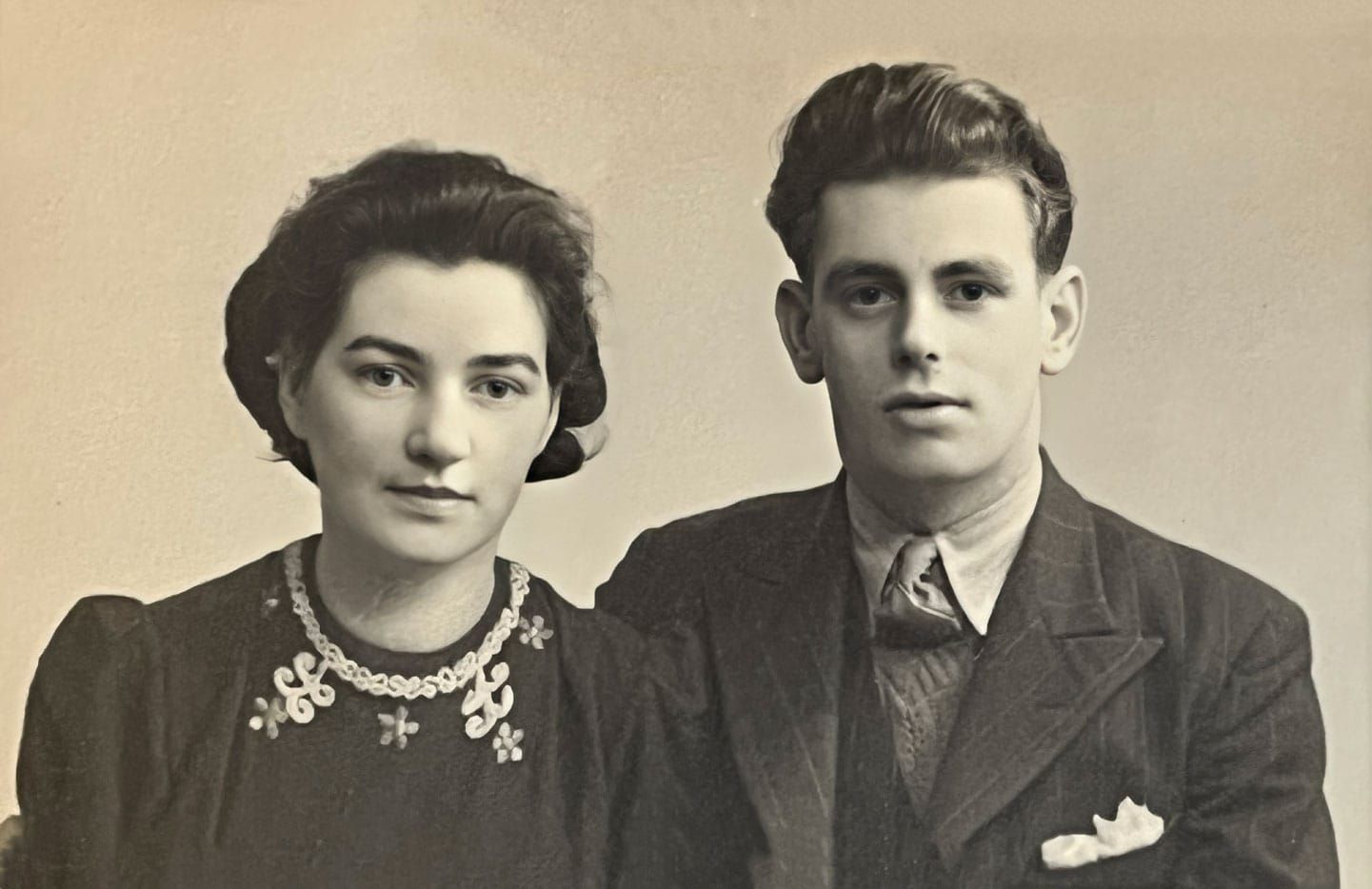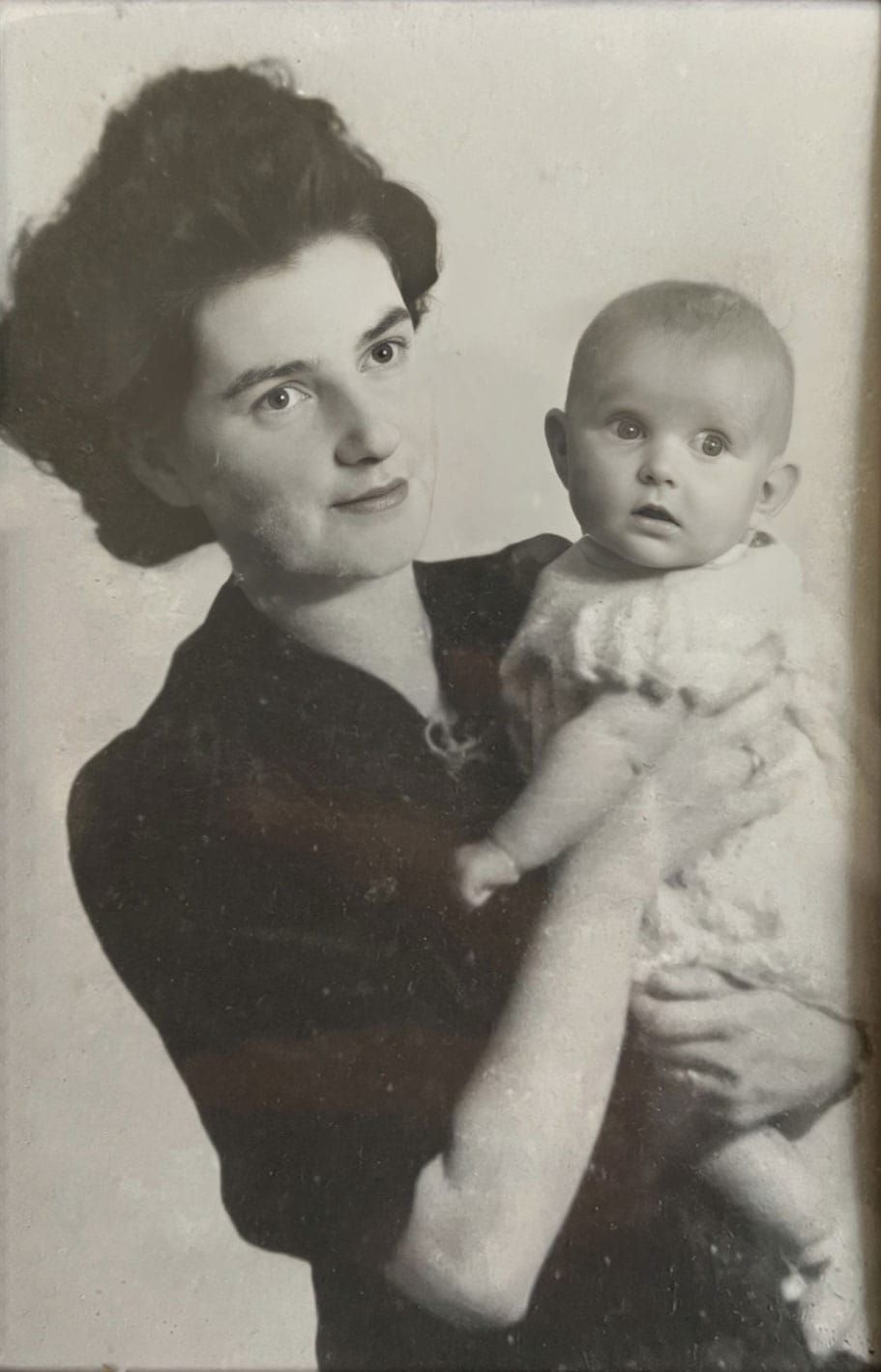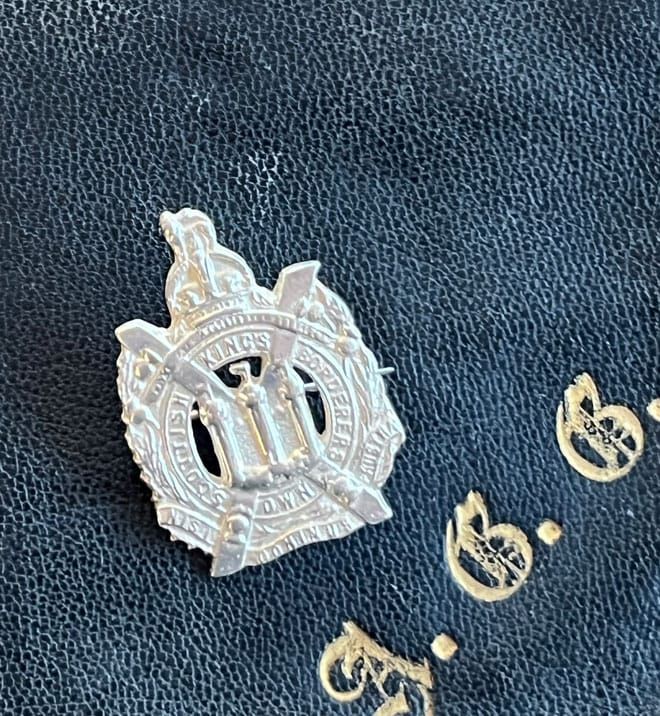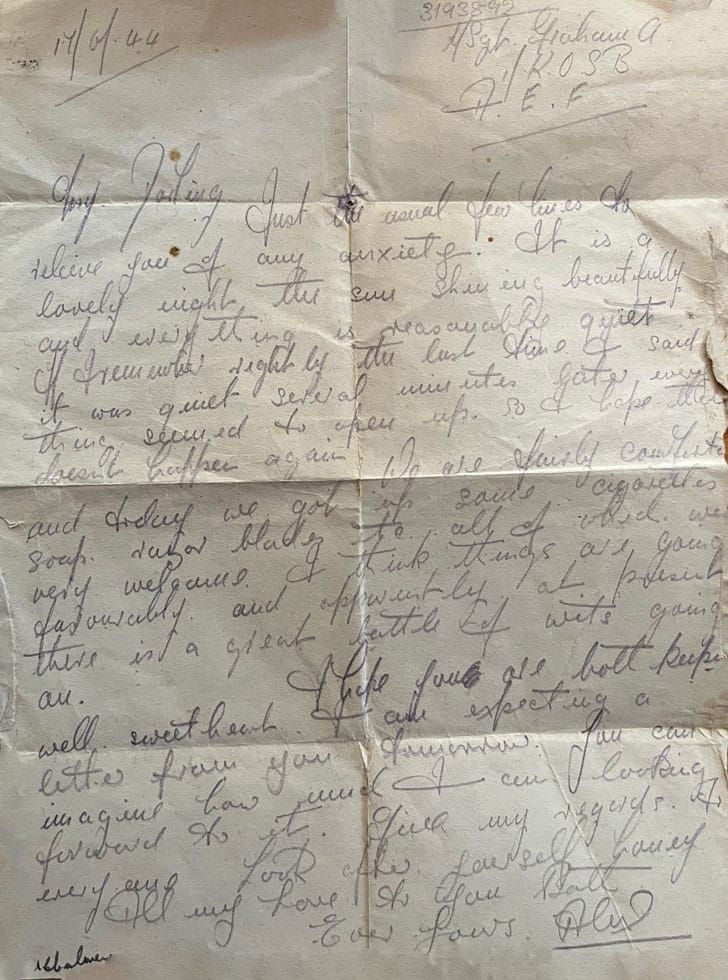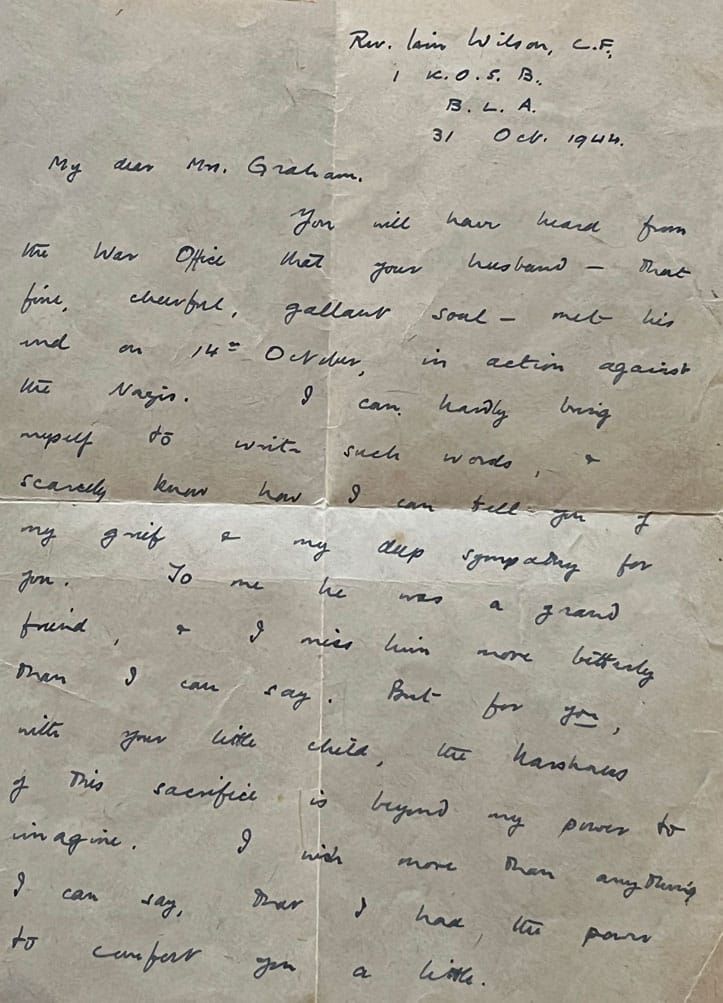Graham | Alexander Gay
- First names
Alexander Gay
- Age
27
- Date of birth
17-04-1917
- Date of death
14-10-1944
- Service number
3193892
- Rank
Serjeant
- Regiment
King’s Own Scottish Borderers, 1st Bn.
- Grave number
IV. B. 3.
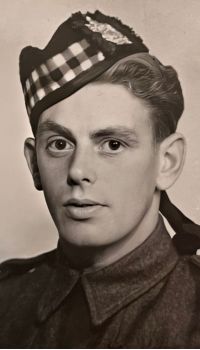
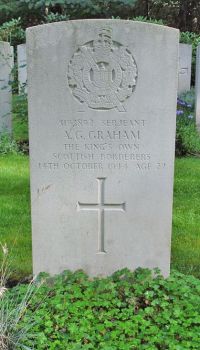
Biography
Alexander Gay Graham was killed in action on 14 October 1944. He was a Sergeant in the 1st Battalion of the King’s Own Scottish Borderers (Service No. 3193892). He was initially buried at Cemetery H.J. Hendriks, in Overloon and re-interred on 27 May 1947 in grave IV. B. 3 in the Overloon CWG Cemetery.
Family Background
Alexander Gay Graham (who was known as Alex) was the son of Robert Graham and Elizabeth Gay who had married at Henderson House, Pittenweem on 1/1/1909 after banns according to the form of the Evangelical Union Congregational Church. Henderson House was Elizabeth’s home. Robert was living at Kirk Wynd, Anstruther Easter and was a Fireman. He was born in 1883 in Markinch, Fife, and was the son of David Graham, a Ploughman, and Janet Graham (nee Law), both of whom had died by this time. Elizabeth Gay was born in 1885 in Pittenweem and was the daughter of Robert Gay who was a fisherman and Agnes Meldrum Gay (nee Watt).
Pittenweem and Anstruther are villages located on the south facing Fife coast. Markinch is further west and inland, near the post war New Town of Glenrothes.
Robert and Elizabeth Graham had children as follows: Agnes Watt 1909, David 1911, Janet Law 1912, Robert Gay 1914 (who died in 1915), Alexander Gay 17/4/1917, Thomas 1921 and twins Francis and Robert 1923 (though Robert died in 1924).
Agnes was born in Pittenweem, David in Anstruther Easter, Janet to Alexander in Methil, Thomas in Anstruther Wester and Francis and Robert in Buckhaven (probably Methil). Methil is part of Buckhaven on the Fife Coast well to the west of Pittenweem.
In 1911, Robert and Lizzie (as she was known then) were living in a 2 roomed property at Rose’s Buildings, Durie Street, Methil. Robert was now working as an Engine Fireman for the North British Railway. By the time of Janet’s birth in 1912 Robert was working as a stoker in a steam vessel.
At the time of Alex’s birth on 17/4/1917, the family were living at 102 Durie Street, Methil. His father was now described as a Railway Engine Driver.
By June 1921, Robert and Elizabeth were at 44 High Street, Anstruther Wester. With them were their first five surviving children, including Alex. Robert was working as an Engine Driver for the North British Railway. The family of seven were still living in a 2 roomed house.
Alex’s brother, David, married Letitia Ross in Scoonie, Fife in 1931. His sister, Janet Law Graham, married Peter Lawson in 1939 in Methil. His brother, Thomas, married Christina Chapman from South Shields in Newbourne, Suffolk, in 1942. He was an RAF Radio Operator during WW2.
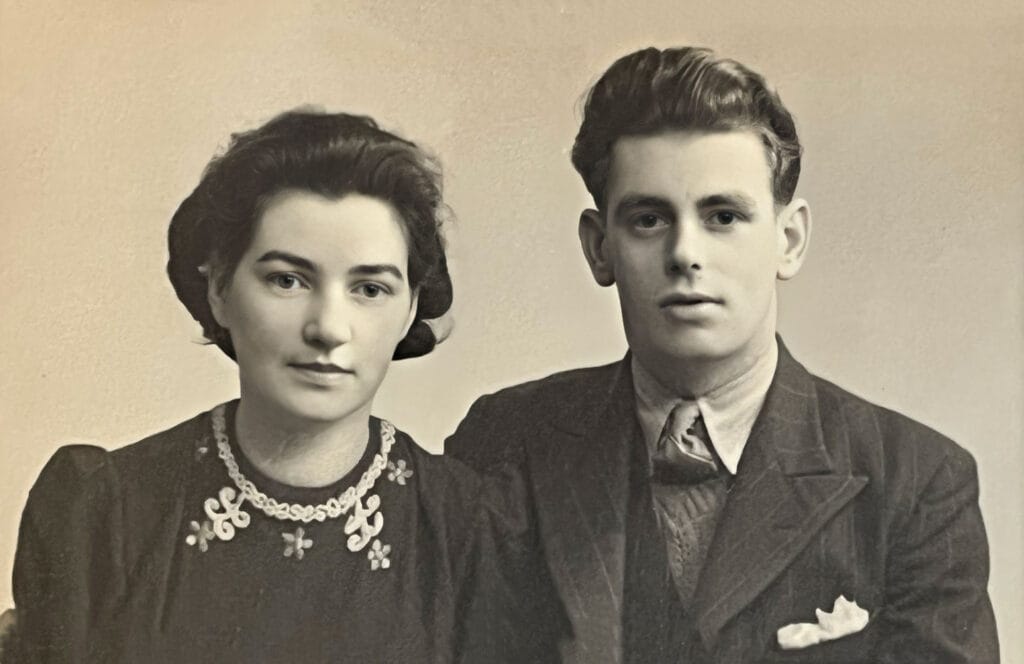
Alexander Gay Graham married Catherine F Stokes in Devon in 1942. It may be that Alex was posted to this area. Kate had been born on 5/4/1919 in Youghal Road, Dungarvan, Waterford, Ireland. In September 1939 she was living at 20 Holmes Road, Twickenham, London. She was working as a parlour maid in the household of 58 year old widower Frederick W Chambers who was a company director. In the same household were Mary E Hall (later Marsh) born 17/9/1906 – working as a Chauffeuse/Housekeeper and Eileen Jeffrey (later French) born 24/5/1921 working as a Cook.
Alex and Kate had a child, Rona C Graham, born in the spring of 1944 in Devon.
Military Career
Alex had enlisted in the 1st Battalion of the King’s Own Scottish Borderers at Berwick on Tweed on 15/3/1940. His trade was given as a Branch Store Manager. He was 5ft 7in tall, weighted 129lbs, had brown hair and eyes and was a Presbyterian.
He undertook rifle shooting training (Class 1 and 2) and in April 1944 he was also instructed in how to defuse German Teller mines and Schuh mines. Eventually, he was promoted to Sergeant.
His daughter has kept two letters which her father wrote to her mother. The first is dated 6/5/1944, just a month before the D-Day landings. Small parts were lost, but it reads as follows:
“My Darling,
This is only a few lines meant until I can find a little more time to write you a decent letter. I thought I might have had a letter waiting for me ……… return today but no such …….. hope there is one tomorrow.
There is a …. that the 24 hour passes will be ….. again, and if so, I will get home at the weekend. Of course, don’t bank too much on that but I’ll try my best. Dick who has been trying for several weeks to get leave to get married has been granted 7 days leave for same. He has been extremely lucky as leave has all been cancelled but this special concession is apparently general throughout. He goes tomorrow and is quite excited.
I hope you are both enjoying the lovely weather and are taking full advantage of it. By the way when are you having Rona christened or have you already done so. Another thing will you send on her birth certificate. Hurry up and write dear, All my love, Ever Yours, Alex.”
Alex will have landed with the 1st Battalion K.O.S.B at Queen Beach on D-Day, 6 June 1944. They reached St Aubin D’Arquenay that night then moved to Periers sur le Dan the following day for an attack on Cazelle. However, this was cancelled as it was reported clear of enemy. They then moved to the vicinity of Le Mensil which is just south of Mathieu and north of Caen. During their time there they assisted the South Lancashires in an attack on Cambes en Plaine on 9 June and patrols were sent to attack towards La Bijude on 12 and 15 June. While in this position near Le Mensil they frequently incurred casualties either while on patrol or as a result of enemy shelling.
It was while here on 17 June that Alex wrote again to Kate at 2 Cleveland Place, Exmouth, South Devon:
“My Darling,
Just the usual few lines to relieve you of any anxiety. It is a lovely night the sun shining beautifully and everything is reasonably quiet. If I remember right by the last time I said it was quiet several minutes later everything seemed to open up so I hope this will not happen again.
We are fairly comfortable and today we got up some cigarettes, soap, razor blades etc. all of which were very welcome. I think things are going favourably and apparently at present there is a great battle of wits going on.
I hope you are both keeping well sweetheart. I am expecting a letter from you tomorrow. You can imagine how much I am looking forward to it.
Give my regards to everyone. Look after yourself. All my love to you both. Ever yours, Alex.
Addendum on envelope:
I have not had a letter from mother. Have you been writing to her or her to you?”
Life was perhaps not quite as quiet as he suggested as on the previous evening two soldiers had been wounded by a burst from a Spandau which fired near the Battalion HQ. On the morning of the day he wrote the letter three heavy explosions had been heard and the village church was shelled by enemy at around 05:40. However, the Allies’ own Medium Artillery knocked out an enemy mortar position in La Bijude after a heavy barrage.
The 1 KSOB fought around Caen until the town capitulated, and then advanced north through Belgium.
The Battalion entered the Netherlands from Belgium on 21 September at Budel, where the troops were given a great welcome by the inhabitants. They moved on to Liessel on 24 September where they undertook patrols of the area east of the Deurne Canal. On 28 September the Battalion took up positions further north covering a cross roads at Milheeze, then on 1 October they moved further north again to St Hubert where they were again very well received by the inhabitants. They remained here for a time carrying out patrols but also undergoing training and having time to relax a little. After what was described as a pleasant stay of 10 days at St Hubert, the whole Battalion moved to an assembly area just west of St Anthonis on 12 October. On that day, the 1st Battalion of the Suffolks succeeded in capturing Overloon and took up a position just south of the village.
At 1320 on 13 October, the Battalion began its attack on the western part of a wood south west of Overloon, south and west of the property known as Helderse duinen today. They started from a position just north of the east/west Overloon to Oploo road. One squadron of Churchill Tanks (4th Grenadier Guards), one squadron of Flail tanks and one squadron of Flamethrowers led the way. By 1700 hours the leading troops had succeeded in reaching a point about 200 yds from the southern edge of the wood and this is when the Battalion consolidated for the night. No enemy were encountered until the forward companies got into position, and then isolated machine guns opened up occasionally and continued to do so till an hour after nightfall. From the time that the whole Battalion was in the wood, the enemy put down fairly heavy artillery, mortar, and Nebelwerfer fire on the wood.
On 14 October, the Royal Ulster Rifles attacked the woods to the east of the Battalion and then consolidated their position. The Lincolns then passed through the RUR and put in an attack on a wood a bit further south of them. They were attacked by machine guns and suffered casualties, causing them to have to withdraw to the RUR positions. For the rest of the day, the enemy put down a large amount of fire on the Brigade area, quite a large proportion of which was from Nebelwerfers. In the afternoon, the Lincolns with two companies of RUR with heavy supporting artillery and machine gun fire succeeded in reaching their objective of a wood further to the south.
During this day, the 1st KOSBs explored further to the south and west corners of the wood where they were based, destroying two machine gun posts and killing six of the enemy and wounding others. Recce patrols also ascertained that there were enemy in a wood to the south and that a stream would present an obstacle to tanks. In was on this day that the Battalion had three men killed and twelve wounded from shelling and mortaring. One of the three killed was Sgt. Alexander Gay Graham and another was Pte. Robert Wright. They were initially buried near the junction of Peelkampweg and Vredepeelweg, south west of Overloon. The third man killed was Private William Joseph Simmons who was initially buried a little further to the south in the wood. Alexander Gay Graham and Robert Wright were later re-interred alongside each other at the Overloon War Cemetery while William Joseph Simmons was later re-interred at Mook War Cemetery.
Aftermath
Alex’s wife was initially informed of Alex’s death in a very impersonal letter written to her by the Infantry Record Office at Perth on 23 October 1944.
She then received a more personal letter written on 31 October 1944 by the Rev. Iain Wilson of the 1 KOSB. It said the following, though is incomplete:
“My dear Mrs Graham,
You will have heard from the War Office that your husband – that fine, cheerful, gallant soul – met his end on 14thOctober, in action against the Nazis. I can hardly bring myself to write such words & scarcely know how I can tell you of my grief & my deep sympathy for you. To me he was a grand friend, & I miss him more bitterly than I can say. But for you, with your little child, the harshness of this sacrifice is beyond my power to imagine. I wish more than anything I can say, that I have the power to comfort you a little.
I hope it may be some small help when I tell you that he met his end quite painlessly, & instantly. He definitely would not know for a second what had happened. He was spared any injuring pain or knowledge of his passing.
He was advancing against the enemy, when he ran into fierce machine gun fire. Wounded to the head, he passed away immediately. Later I found him and laid him to rest with some of his comrades. He looked absolutely peaceful, & with hardly a mark. I secured such of his possessions as I could, & all available personal effects should reach you in due course.
My dear soul, I cannot tell you with what grief I preformed this duty. It is as if a piece of…”
Alexander Gay Graham is commemorated on the WW2 memorial plaque in Methil Parish Church.
Kate had a large Irish family, some of whom came to England after the war. They helped her look after Rona.
At some point after Alex’s death Kate was living at 25 St. Luke’s Road, Maidenhead, Berkshire. In 1950, she married Charles W F Clarke in Maidenhead and they went on to have a daughter there, Una Clarke, in 1953.
Alex’s father only survived him by three years, dying in 1947 in Methil. His mother died in 1966, again in Methil.
His brother, Thomas, emigrated to New South Wales in Australia in 1949 and his youngest brother, Francis, married Hannah Frazer McLaughlin McClean in 1952.
His sister, Janet Law Lawson, died in 1954 in Edinburgh. His brother, David, died in 1976 and his sister, Agnes, who never married, in 1991. Both died in the Methil area. His brother, Thomas, died in 2004 in New South Wales and finally Francis died in 2016 in Methil.
Several of them left children, some of whom remain in the Methil area.
Alexander’s daughter, Rona C Graham, married Ronald J Jenkins in 1969 in Windsor, Berkshire.
Sources and credits
From Scotland’s People website: Civil and Parish Birth, Marriage and Death Records; Scottish Census Records
From FindMyPast: Electoral Rolls; Military Records
King’s Own Scottish Borderers website
1st KOSB War Diaries (Royalscotskosbwardieries)
Assistance, Photo, Alex’s Log Book and letters from Rona Jenkins (Alexander’s daughter) and Rebecca Joyce (Alexander’s great granddaughter.)
Research Nicole van Loon, Elaine Gathercole

